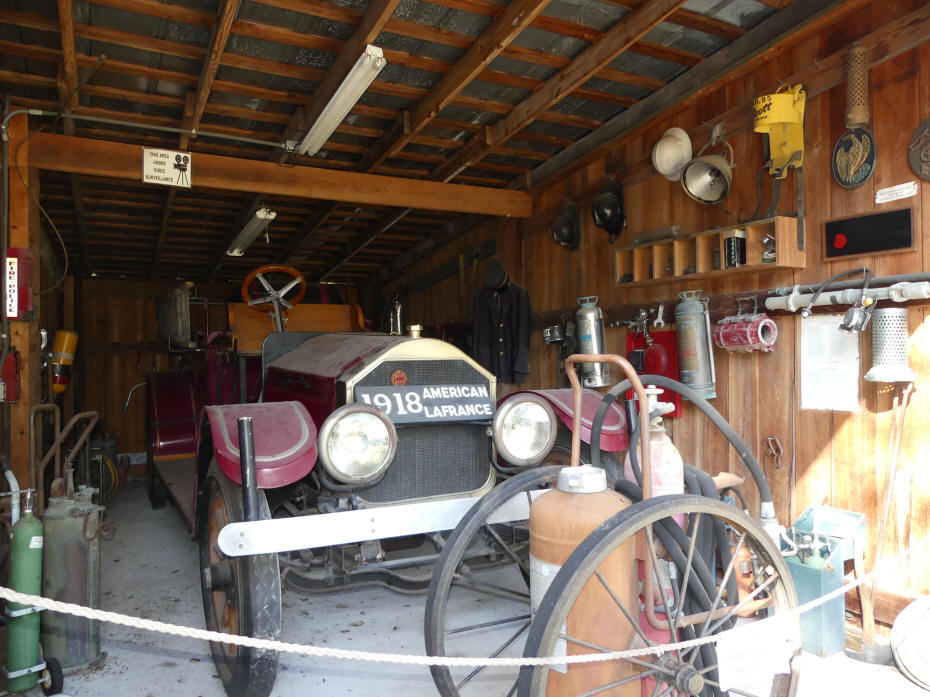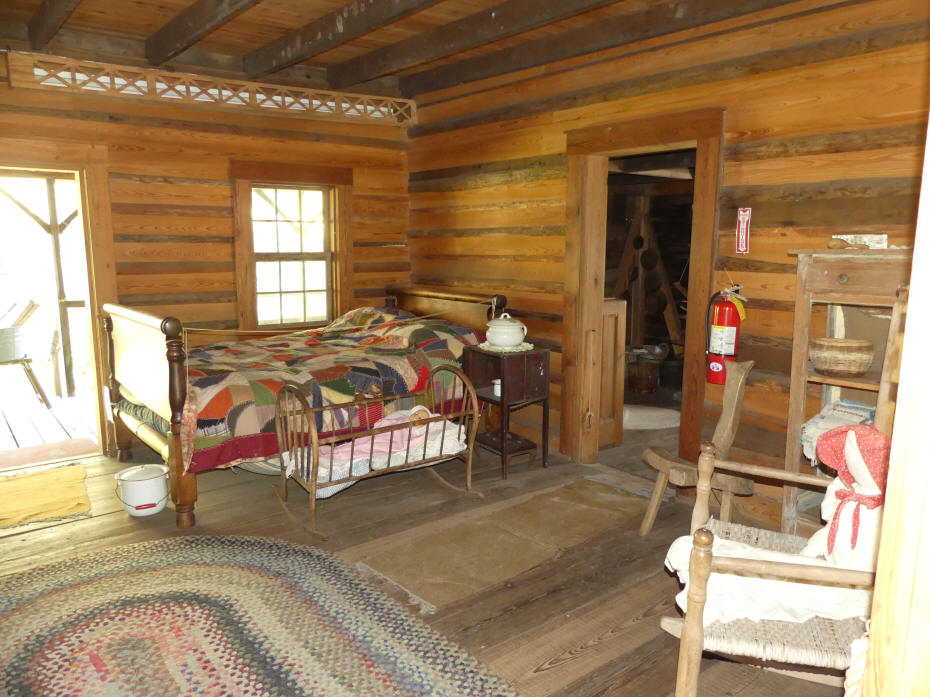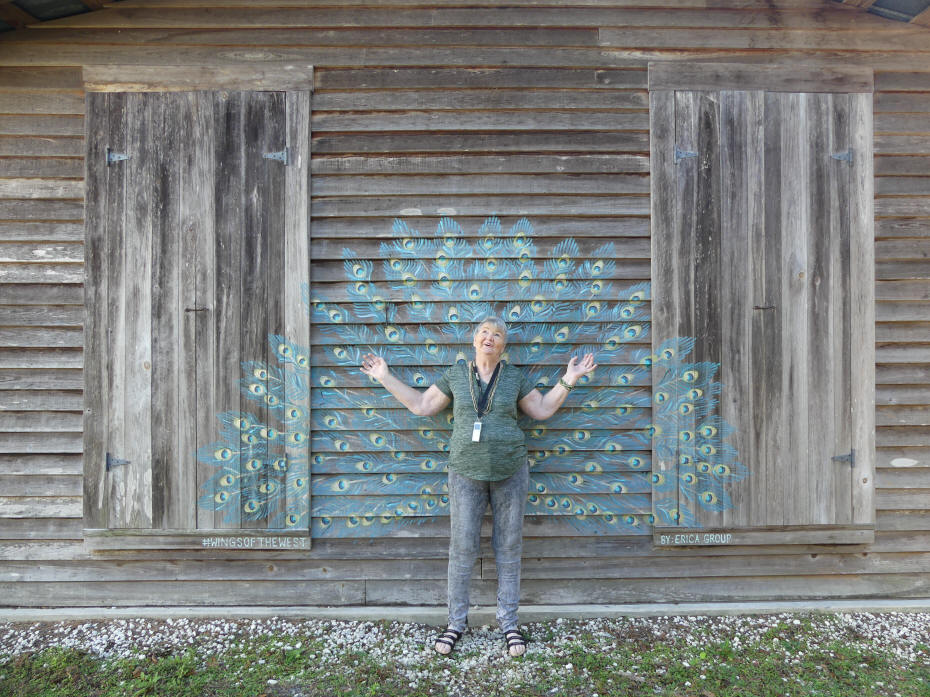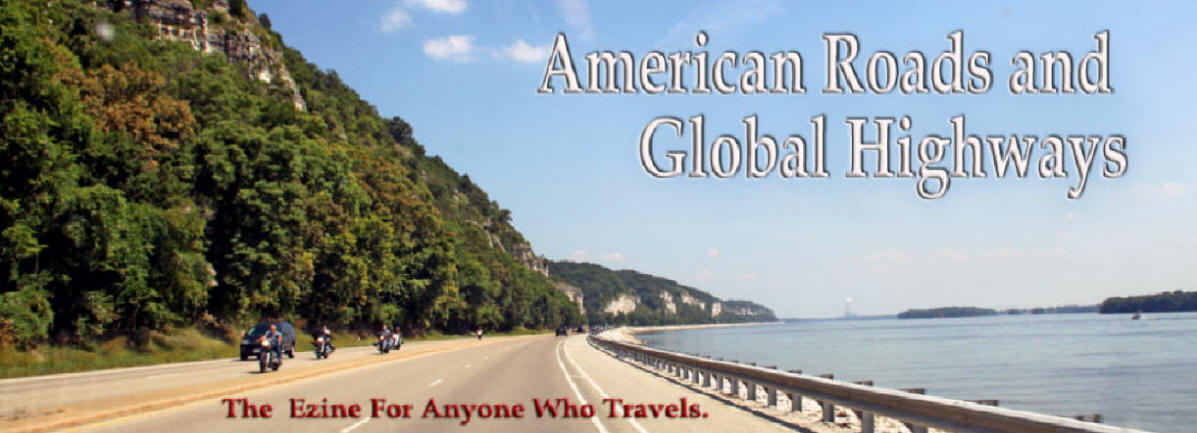|
There's a special place in West Volusia
County where you can time travel. Barberville
Pioneer Settlement transports you back to the
turn of the century when Florida was the wild
frontier. The buildings range from the late
1800s to early 1900s and present a way of life
that is all but forgotten now. It's the perfect
place to blend education with fun in a safe,
mainly-outdoor environment.
It all began in 1976 with the Central School
of Barberville circa 1919 (the image in the
title picture) and over the years became a
complete Florida pioneer settlement. Debra West,
the settlement manager, met us at the entrance
which was once the 1920s bridge tender’s house
from the bridge where SR 40 crossed the St.
Johns River at Astor. When a new raised bridge
was built, the bridge tender was no longer
needed. The building now serves as a gift shop
and admissions office for the Pioneer
Settlement. Debra showed us around. She told us
a few of the smaller buildings are closed to the
public due to Corona safety requirements.
However, most of the settlement is open to the
public. They plan to hold their annual
Charistmas event in a safe manner.

A country store was the heart of every small
Florida settlement. This was where farmers
bought tools and supplies. His wife bought
material and groceries. These stores stocked a
little of everything an early settler needed.
Due to Covid, all the items for sale at the
Country Store are now in the Bridge Tender
House.


These settlers were, for the most part, good
people. The village church was an important part
of a settlement. The church here is the Midway
United Methodist Church circa 1890. It's a
one-story wood structure. The inside is
beautiful in its simplicity.

The Turpentine Still’s roof structure had become
unstable, due to wear and tear over time, and is
currently in need of a contractor to help out
with the rebuild, but the brickworks and barrel
are still there. Turpentineing was an important job at that time.
The still dates to about 1924.


Since most structures were wood, fire was a
fierce enemy in early Florida. The settlement
has two fire trucks, a 1933 Hahn and a 1918
American LaFrance.

Numerous other wagons are on the site, ranging
from a covered wagon to farm wagons. Naturally,
a blacksmith was needed to maintain all these
wheels and horseshoes as well as to create many
needed implements. There is a well-equipped
blacksmith shop. During events, there would be a
real blacksmith making things at the flaming
forge as well as docents in costume at the
cabins and around the grounds.

Trains were a main form of transportation those
days. Pierson Railroad Depot was built in 1885
along the new Jacksonville, Tampa, Key West
Railway Line at Pierson, Florida, then a busy
agricultural community. It served the community
for over 100 years. The railway later became
part of the Atlantic Coast Line Railroad. The
depot was moved to the Barberville Pioneer
Settlement in 1982. The caboose was moved the
following year.


The homes range from the simple to the
elaborate. The Lewis Log Cabin is the oldest
building in the settlement dating to 1875. We
toured the inside. It is amazing how people
lived happily in such simple structures. The
living and sleeping area was downstairs and in
warmer weather, the children slept in the loft.
Jim and Mary Lewis had twelve children and all
but the youngest was born in this house. It's
the only building not native to Florida. It came
from South Georgia but is typical of houses that
would have been built here at that period.

The most upscale home there is the Underhill
House. It was built for Joseph and Lucretia
Underhill in 1879 and was the first brick home
built in Volusia County. The bricks were built
from clay from an area near Deep Creek just
about two miles away.

Debra told us a fascinating
story about the family history. Back sometime after the house was built,
Joseph, Lucretia, and another couple went on a
boat to Tick Island between Lake Woodruff and
Lake George where he had an orange grove. On the
trip, one of the ladies needed to use the
bathroom. They put ashore and somehow Joseph
accidentally shot himself in his leg. The other
man got him over to a store in town where a
train would stop and while waiting for the train,
Joseph died.
Several years later Lucretia remarried a con-man
named Joseph Lichtenstein. He went through her
inheritance and then skipped out with another
woman.
The house has a fantastic history. Some of the
teachers who taught at the school boarded here.
There are lots of items found in the house and
pictures of the renovation.

Central School of Barberville is filled with
treasures. There is a Timucuan canoe dating
back between 600 to 800 years old. Clothing a
Seminole would have worn.

The hall contains a display of old treadle
sewing machines, narrow shoes that no living
woman could squeeze her foot into today, a
display of handmade quilts, and memorabilia and
photos from that time period.

One room is arranged as a typical classroom of
that era would have looked. The desks all have
inkwells. The teacher's desk has an old
fashioned world globe on it. There is a
blackboard of course since no computer screens
were available. A dunce cap and stool to seat
the wearer are in front in plain view. Yes,
teachers engaged in public shaming of students
who didn’t do their homework and know the
correct answer then.

Another room is dedicated to the art of weaving.
Who knew there were so many different kinds of
looms. You'll see various kinds of yarn and
samples of woven articles. If you wanted a rug
or a blanket or even a sweater those days, you
couldn't just order from Amazon.

As would be normal in a pioneer settlement,
there are real live animals there. The peacocks
were my favorite but there are chickens, goats,
donkeys, and more.

There is one more treat you wouldn't normally
find in a living history setting. Wings of the
West artist Erica Group has painted a wings
mural trail in sites that reflect West Volusia
County life. The wings at the settlement are
vibrant peacock wings painted on an antique
wooden building. Do take your picture posing at
the wings.
This is just a touch of what you will find. Now
is the perfect time to explore Barberville
Pioneer Settlement and discover the Florida
Cracker way of life before televisions, cell
phones, internet, and Covid.
For additional information:
https://www.pioneersettlement.org/
www.visitwestvolusia.com
|








